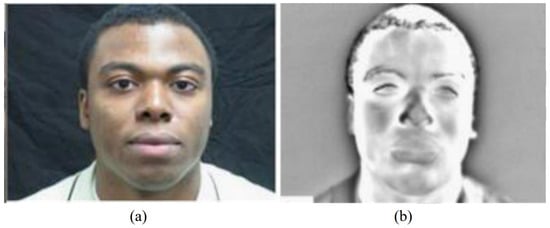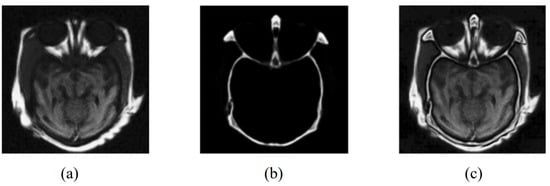- infrared and visible image fusion
- image fusion
- multi-scale decomposition
- compressed sensing
1. Introduction简介
Image fusion attempts to use various techniques as enhancement strategies to create rich images with many aspects and information. Combining multiple sensors to produce an image is the process of image fusion. The continuous progress of current science and technology has led to the development of image fusion technology because an image with a single piece of information cannot meet the needs of people[1]. Infrared and visible image fusion[2], multi-focus image fusion, medical image fusion, and remote sensing image fusion are the main branches of image fusion.
图像融合试图使用各种技术作为增强策略来创建具有许多方面和信息的丰富图像。组合多个传感器产生的图像是图像融合的过程。当前科学技术的不断进步导致了图像融合技术的发展,因为具有单个信息的图像无法满足人们的需求[1]。红外和可见光图像融合[2]、多焦点图像融合、医学图像融合、遥感图像融合等是图像融合的主要分支。Infrared and visible image fusion are commonly used in the above four image fusion techniques. The visible light band, with its high resolution and unusually detailed texture, is most consistent with the visual field of the human eye, producing images very similar to those people see in their daily lives. However, it will be severely disrupted by shielding, weather, and other factors. The ability to recognize and identify targets in infrared images captures thermal targets even in the most challenging weather conditions, such as heavy rain or smoke. On the other hand, low resolution, fuzziness, and poor contrast are further disadvantages of infrared images.
红外和可见光图像融合是上述四种图像融合中比较常用的技术。可见光波段具有很高的分辨率和异常详细的纹理,与人眼的视野最一致,产生的图像与人们日常生活中看到的图像非常相似。但是,它将受到屏蔽,天气和其他因素的严重干扰。识别和识别红外图像中目标的能力即使在最具挑战性的天气情况下(如大雨或烟雾)也能捕获热目标。另一方面,低分辨率、模糊性和对比度差是红外图像的进一步缺点。In practical applications, the combination of infrared and visible images can solve various problems. For example, in some cases, operators must simultaneously monitor a large number of visible and infrared images from the same scene, each with its own unique requirements. Humans have found it very challenging to combine information from visible and infrared images just by staring at various visible and infrared images. In some cases with complex backgrounds, infrared images can overcome the constraints of visible images, obtain target information at night or in low-illumination environments, and improve target recognition abilities. By fusing infrared and visible light photos, workflow efficiency and convenience can be greatly improved. At the same time, infrared and visible image fusion is widely used in the fields of night vision, biometric recognition, detection, and tracking [4]. This highlights the importance of infrared and visible image fusion research.
在实际应用中,红外和可见光图像的合并可以解决各种问题。例如,在某些情况下,操作员必须同时监控来自同一场景的大量可见光和红外图像,每个图像都有自己独特的要求。人类发现,仅仅通过凝视各种可见光和红外图像来组合来自可见光和红外图像的信息是非常具有挑战性的。在一些背景复杂的情况下,红外图像可以克服可见光图像的约束,在夜间或低照度环境下获取目标信息,提高目标识别能力。通过融合红外和可见光照片,可以大大提高工作流程的有效性并带来便利。同时,红外和可见光图像融合在夜视、生物特征识别、检测和跟踪等领域存在广泛的应用[4]。这凸显了红外和可见光图像融合研究的重要性。2. Application of night vision夜视的应用
The thermal radiation information of the target object or scene is usually converted to false color images because the human visual system is more sensitive to color images than grayscale photos. Thanks to the use of color transfer technology, the resulting color images have a realistic daytime color appearance, which makes the scene more intuitive and helps the viewer understand the image. Figure
目标物体或场景的热辐射信息通常转换为假彩色图像,因为人类视觉系统对彩色图像比对灰度照片更敏感。由于采用了色彩转移技术,产生的彩色图像具有逼真的白天色彩外观,这使得场景更加直观,有助于观众理解图像。图1shows an example of blending visible and infrared images at night to achieve color vision.
7显示了在夜间融合可见光和红外图像以实现色觉的实例。
Figure图 17. Example of infrared and visible image fusion for color vision at night. (
夜间彩色视觉的红外和可见光图像融合示例。(a) visible light images; (
) 可见光图像;(b) infrared images; (
) 红外图像;(c) reference images; (
) 参考图像;(d) fusion of images.
) 融合图像。Grayscale images are less responsive to human vision than color images. Human eyes are able to distinguish between thousands of colors, but they can only distinguish between about 100 grayscale images. Therefore, it is necessary to color grayscale images, especially because the fusion method of infrared and visible images with color contrast enhancement has been widely adopted in military equipment[3]. In addition, due to the rapid growth of multi-band infrared and night vision systems, there is now greater interest in the color fusion ergonomics of many image sensor signals.
灰度图像对人类视觉的响应不如彩色图像。人眼能够区分数千种颜色,但它们只能区分大约 100 张灰度图像。因此,必须对灰度图像进行着色,特别是因为具有颜色对比度增强的红外和可见光图像的融合方法已在军事装备中被广泛采用[94]。此外,由于多波段红外和夜视系统的快速增长,现在人们对许多图像传感器信号的色彩融合人体工程学表示更感兴趣。3. Application in the field of biometrics在生物识别领域的应用
The subject of facial recognition research is progressing rapidly. The face recognition technology for visual images has been developed to a very advanced stage and has achieved great success[4]. In the case of low light, the face recognition rate using visual technology will be reduced. However, thermal infrared face recognition technology can perform well. Figure 2 shows images of faces captured in infrared and visible light.
面部识别研究的课题进展迅速。视觉图像的人脸识别技术已经发展到非常先进的阶段,并取得了巨大的成功[95]。在弱光情况下,使用视觉技术的人脸识别率会降低;但是,热红外人脸识别技术可以表现良好。图18显示了在红外光和可见光下捕获的人脸图像。
Figure图 218. Examples of infrared and visible face images. (
红外和可见人脸图像的示例。(a) visible light images; (
) 可见光图像;(b) infrared images.
) 红外图像。Although face recognition technology based on visible images has been well studied, there are still significant problems with its practical implementation. For example, the recognition effect can be significantly affected by changes in lighting, facial expressions, background, and so on in the actual scene. To recognize faces, infrared photos can complement information hidden in visible-light photos. In recent years, the application of infrared and visible image fusion based on biometric optimization algorithms has increased. By increasing the amount of computation, this approach can improve identification accuracy and provide more supplementary data for biometrics. The future application of infrared and visible light fusion technology in the field of biometrics will also become more extensive.
尽管基于可见图像的人脸识别技术已经得到了深入研究,但其实际实施仍然存在重大问题。例如,识别效果会受到实际场景中的照明、面部表情、背景等变化的显著影响。为了识别人脸,红外照片可以补充隐藏在可见光照片中的信息。近年来,基于生物特征优化算法的红外和可见光图像融合的应用有所增加。通过增加计算量,这种方法可以提高识别精度,并为生物特征提供更多补充数据。未来红外和可见光融合技术在生物识别领域的应用也将变得更加广泛。However, the growing use of facial recognition technology has also raised some ethical and privacy concerns. For example, while surveillance systems in public places contribute to social security, they also raise questions about whether people's facial information could be stolen and improperly used by outside parties. Various countries where governments are using facial recognition technology to monitor citizens' activities have raised concerns about abuses and human rights violations.
然而,面部识别技术的使用越来越多,也带来了一些道德和隐私问题。例如,虽然公共场所的监控系统有助于社会安全,但它们也引发了人们的面部信息是否可能被外部各方窃取和不当使用的问题。各国政府正在利用面部识别技术监控公民活动的各个国家都对虐待和侵犯人权的行为表示担忧。4. Application in the field of detection and tracking在检测和跟踪领域的应用
5. Application in the field of medical diagnosis在医学诊断领域的应用

6. Applications in the Field of Autonomous Vehicles
